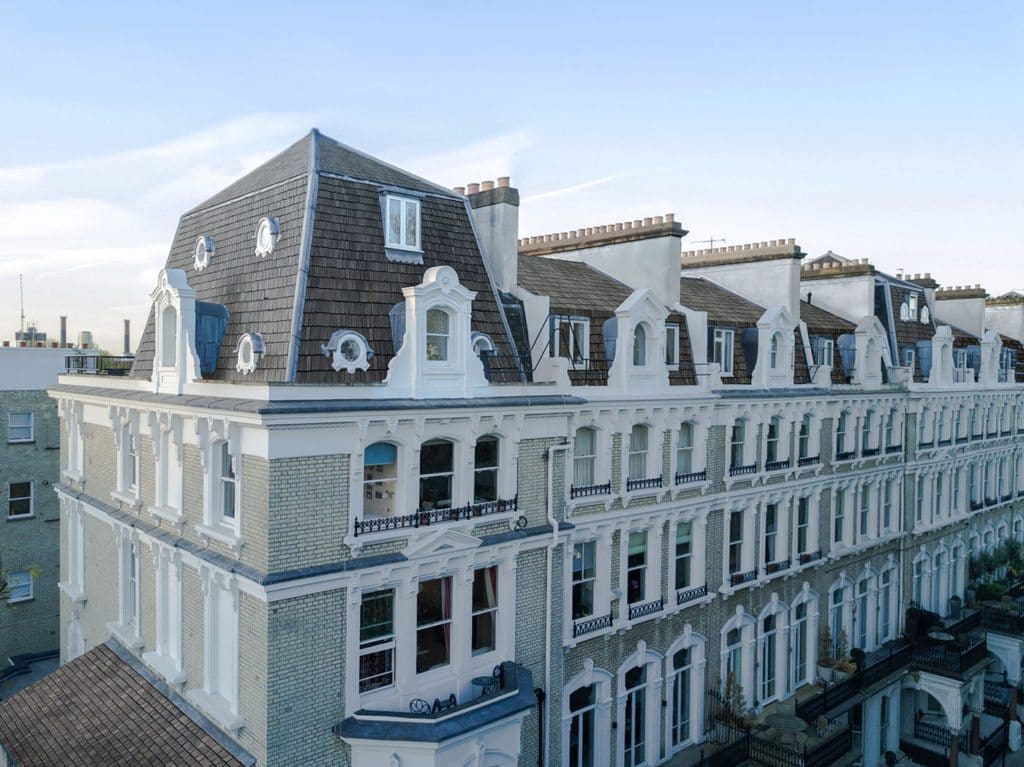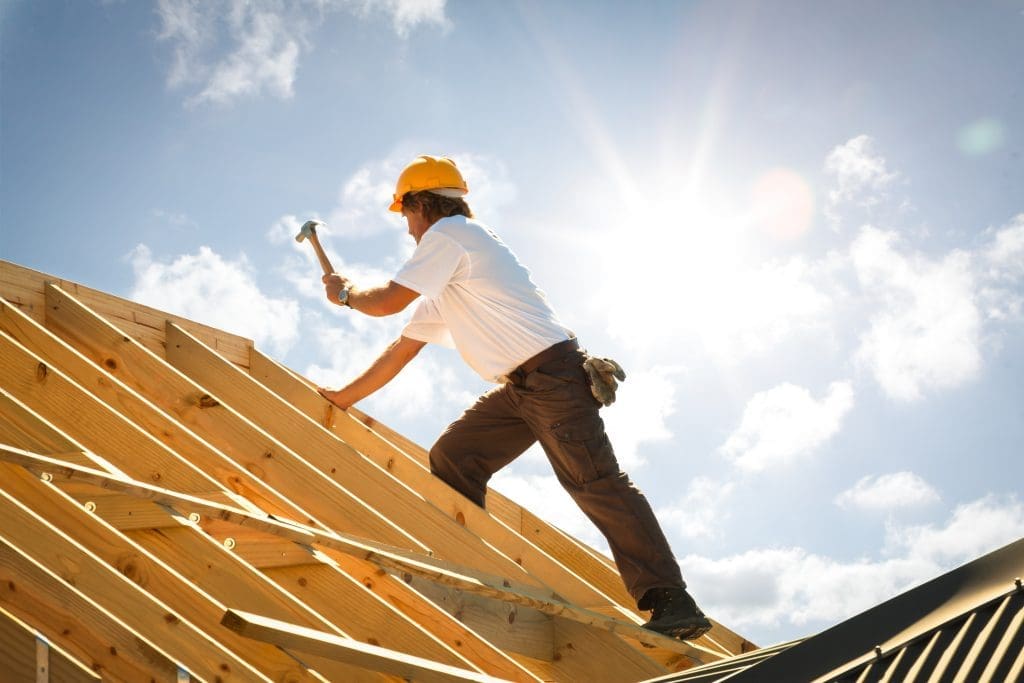

Airspace development has many benefits which we frequently champion in this blog. It can unlock much-needed space for new homes in London and breathe life into old buildings. At the same time, it prevents both urban sprawl and building on the green belt.
One immediate effect of completing an airspace development above your property is that it gives you a new roof. This can be a massive cost benefit for freeholders of buildings with multiple flats, where a new roof will cost tens of thousands of pounds.
What is the cost of a new roof?
Replacing the roof of just a single residential building can cost up to £20,000. This cost is multiplied when you’re talking about a larger building housing several units. This is the type of building most suited to the airspace development that we undertake.
It can take a group of leaseholders many years to save up this amount in annual contributions to their service fund, delaying the repair of the communal roof. Individual freeholders might need to borrow or liquidate assets to fund a new roof.
Putting off replacing a roof can be a problem in itself. Delays can lead to water ingress and water damage to the upper floors of the building, or patching up the roof until it can be replaced.
Breakdown of standard roof costs
To understand what makes a roof cost so much, let’s look at the breakdown provided by Checkatrade for a standard roof of a residential dwelling. The figures are correct for 2024:
– Scaffolding – set up and removal plus weekly hire – up to £1,300
– Removal of the existing roof – demolish and skip hire costs – up to £2,500
– Roof frame: average cost of £2,500 – £4,500 for a standard house build
– Tiles or slate for a standard house build – average slate roof costs up to £7,000
– Insulation cost – up to £1,280
– Fascia and soffit board installation cost – up to £2,500
– Guttering installation cost – around £900
You can find more information about standard house roof costs on Checkatrade.
Replacing a roof via airspace development
A recent article in The Sunday Times, called Why a Developer Raised our Roof – Free of Charge, looks at the residents of 50 Oakley Square in London, who were facing a six-figure bill to replace their roof.
The residents share the freehold of the building and were struggling to save up for the roof repairs. The roof was leaking and there were a number of problems all around the building. In the end, they did not pay a penny.
An airspace development solved the problem for them, providing not only a new roof but many other upgrades and improvements to the building at the same time. It didn’t cost them a thing and they gained some extra benefits along the way.
Roof replacement case study
A closer look at 50 Oakley Road provides a perfect case study of how airspace development can and should be, a win-win situation for everyone.
It’s no secret that some airspace developments have bad press, usually because of poor outcomes for the residents. In the worst cases, freeholders are accused of maximising the building’s value at the expense of residents below, who have to endure the building works but gain little from it.
We have highlighted some of these stories in this blog, as part of our ongoing commitment to upholding standards in the airspace development industry in London. It’s one of the reasons we co-founded ARAD, an industry body for the airspace development industry in the UK.
What success looks like
One of the reasons that the airspace development of 50 Oakley Square worked so well for the residents may be because the flat owners own the building’s freehold, and they are the ones who decided to bring in an airspace developer.
According to The Sunday Times, the occupants of 21 out of the 38 flats voted in favour of the works, so this means they were positively engaged with the development from the start.
And there were other reasons for them to go down the airspace development route too:
In the article, Bill Collins, the porter at Oakley Square for 24 years, says: “The building was a bit old fashioned and falling apart in places.”
“There were a few grumbles because of the noise and stuff, but [the dissenting residents] came around in the end because [the developer] has done a great job, I think.”
Other improvements with airspace development
When you work with Upspace to develop the unused space above your building, we assess all requirements for improvements. Here are some of the things we will normally look at:
– Renovation of communal areas such as entrances, foyers and lobbies.
– Renovating and upgrading communal outdoor spaces – cycle storage, bin storage.
– Improvements to insulation and the exterior of the building.
– Upgrading security systems.
– Upgrading safety equipment such as fire alarms.
– Accessibility like ramps and lifts.
While undertaking our projects, we commit to upgrading the fabric of the individual buildings. The common parts can be upgraded with new flooring, a fresh coat of paint, LED lighting, alarm systems and possibly skylights.
The facade can be repainted and in some cases re-clad, keeping up-to-date with the latest standards and requirements following the Grenfell disaster and inquiry,
Case study: Other improvements
As an illustration of how improvements like the ones itemised above can make a real difference, at 50 Oakley Square in London the dated burgundy carpet in the foyer was replaced with sleek stone-effect porcelain tiles.
There was a new cycle store, redecorated corridors and stairwells, and a disability access ramp outside the main entrance. There was a replacement office for the porter, with a dedicated parcel room with extra space, to reflect today’s shopping habits.
And finally, there is now a second lift that goes to all floors “because we wanted all the residents to benefit from it, not to feel like it was an ‘elite’ lift for the new floors”, the developer said.
Read the full article in The Sunday Times here
Wider benefits of airspace development
As you may have already worked out, service charges can go down after airspace developments, as many of the improvements and upgrades the building needs are taken care of in the build.
Often the price of existing units in the development will go up too, with an average uplift of 3%-4% – but it’s not unheard of for the value to rise by up to 10%.
Brand new roof guaranteed for 20+ years
As we’ve highlighted, one of the biggest headaches for leaseholders and freeholders alike is communal roofs.
Our airspace projects remove this headache in one swoop, laying a whole new roof that comes with an industry-standard guarantee which usually exceeds 20 years.
This means that any issues are covered by the warranty, leading to great savings for leaseholders well into the future. It’s also been proven that leasehold values rise considerably with the assurance of such roof guarantees.
Ready for airspace development?
If you have been considering airspace development for the rooftop space above your building, please get in touch with us to find out more.
A new roof with 20+ years guarantee is just one of the many benefits of rooftop development. We would be happy to talk you through the many others and introduce you to this exciting new future of residential property development.
Contact Us
Get in touch with us if you have any questions about Upspace and working with us on airspace development. We are incredibly responsive and value your questions.
PO Box 1334
Enfield EN1 9AP
hello@upspace.co.uk










